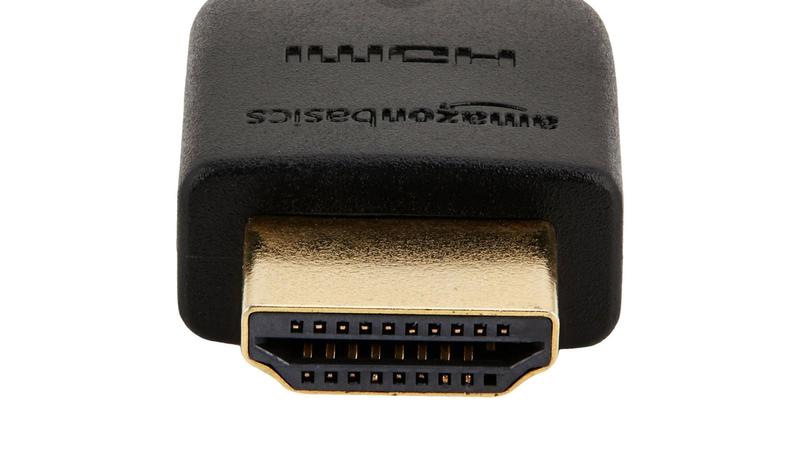Often, HDMI is the first option when you have to connect a device to a monitor, but you also have other options at hand.
Below is a list of six types of connections and some information about each one, so you always know what you need when you buy a cable.
HDMI
HDMI, or High-Definition Multimedia Interface, has come to be used on most electronic devices, including monitors, televisions, home cinema systems and more.
HDMI 2.0 supports 4K resolutions (4096 x 2160 pixels), and future releases, such as HDMI 2.1, may support 8K resolutions.
HDMI cables can be standard, or high-speed, with or without an Ethernet connection. An HDMI hub or splitter can be used to transmit video signal to multiple monitors. As of standard 1.3, these connections have an Ethernet connection included in the cable. Another important function of HDMI is ARC (Audio Return Channel), which allows the transfer of sound from the source to a receiver. Previously, such a process was performed using a separate cable.
VGA
VGA is an acronym for Video Graphics Array and is probably the oldest type of connector we can still find. VGA was created in 1987 by IBM and is known as the "15-pin blue plug and screw," the latter being used to secure the connection.
VGA can display resolutions up to 1080p, but the major problem with this type of connection is that it uses analog signals to transmit signals from the transmitter to the receiver. This results in lower image quality compared to other digital interfaces.

Also, a separate audio connector is needed if you need to transmit audio signals, because VGA "knows" to work only with video signals. Cable length and quality play an important role when it comes to signal degradation.
DisplayPort
DisplayPort was launched in 2006 and is compatible with HDR and up to 8K resolutions. It also benefits from the Display Video Compression feature, which is capable of transmitting video signals without loss of quality via the DisplayPort connection.
VESA, the creators of this standard, is constantly adding new features to keep up with HDMI. One is support for dynamic metadata, which allows content creators to set up HDR for individual scenes.
This standard also allows the implementation of DRM, so that copyrighted content cannot be run unauthorized. This standard has other advantages, such as the use of USB Type-C as an output source for DisplayPort, without the need for an adapter, according to fossbytes.com.
DVI
DVI, or Digital Visual Interface, carries on the legacy of VGA, only in digital format. This standard appeared in 1999, and the 29-pin connector is similar to the VGA connector.
A DVI interface can transmit an uncompressed digital video stream to a receiver. In the case of digital signals, it can transmit video signal at WUXGA (1920 x 1200 pixel) resolutions via Single Link, and WQXGA (2560 x 1600) via Dual Link.
DVI is also compatible with analog video signals, so using an adapter makes it compatible with a VGA interface. As with VGA, however, DVI is an endangered technology.
Thunderbolt
Thunderbolt is an interface created by Intel, which aims not only to transmit video signal, but also to connect storage devices. Thunderbolt is not present on many devices, since it appeared only 5 years ago. Apple has introduced such ports on Macbook Air and Pro laptops.
The initial versions of Thunderbolt, 1 and 2, used the mini DisplayPort connection, while Thunderbolt 3 uses a USB Type-C connection.
Thunderbolt 3 supports up to 40Gbit / s bandwidth, being able to run two 4K streams at the same time.
MHL
MHL, or Mobile High-Definition Link, is an interface designed for portable devices, including mobile phones. The original version of MHL could transmit video at 1080p resolution, but also 8-channel audio signal.
The MHL 3 is compatible with 4K video resolution at 30fps, along with 7.1 surround sound compatibility. On phones, it uses the micro-USB 2.0 port to connect, using an MHL-HDMI adapter.
The latest version, superMHL, is compatible with 8K video signals at 120fps.
